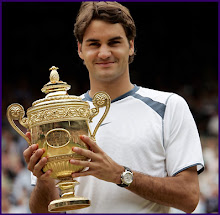But don’t just keep barreling toward the net.
After those first few strong strides, slow down, get balanced as you perform your split step, and then get ready to explode again in the direction of the oncoming ball.
A big forehand can help you climb to the top of the club ladder.
To hit the runaround forehand, remember to backpedal quickly and keep your racquet up high as you move into position. Once there, be sure to swing out and give the ball a ride.
Adding a weapon, no matter what the stroke, can significantly elevate your game. When you have a shot that you can use to dictate points and that your opponent is afraid of, you’re going to win a lot of matches. One of the best shots to develop, and possibly the easiest, is a dominating forehand.
The first step in this development is to learn to hit the runaround forehand. That’s where you move into position to crack a forehand from your backhand side. So if you’re right-handed, you’re hitting your forehand while standing in the ad court. The one thing you must do when hitting a runaround forehand is give it a ride. You’re leaving a lot of room open on your forehand side, so you can’t be passive with this ball. Too many players push this shot and get burned. I know from experience because I used to do that myself.
Here’s one good drill : Have someone feed you a series of four to six floating balls that land several feet from the singles sideline on your backhand side. Run around your backhand, smack the forehand hard, and move back to the center. Make sure that as soon as you’ve hit the forehand you slam on the brakes and work your way back to the middle. Remember to move your feet quickly and keep your racquet up as you get into position.
Players tend to go inside-out with the runaround forehand because the net is lower going crosscourt, there’s a bigger target area to hit into, and it’s generally to an opponent’s backhand. But don’t neglect the down-the-line forehand from this position. Practice both shots so you don’t get predictable.
Once you can rip five to six penetrating runaround forehands in a row, then you can progress to the next step. When you’re successful with the runaround forehand, you can catch your opponent by surprise and get a short ball out of it, so you must learn how to move up and take advantage of this by hitting the next forehand with direction and purpose. Have your coach or partner feed dozens of short balls that you can drive from inside the court. If you want to feel confident about finishing points with your forehand, that’s what you have to do.
You won’t turn your forehand into a hammer overnight. I’m still working on it. But if you’re patient and dedicated, it’s one of those shots that, with some simple practice, can eventually bring you huge dividends.
The best way to practice your runaround forehand is to stand in the center of the court and have a practice partner feed a series of soft floating balls to your backhand side. Move into position and rip the ball inside-out or down the line.
